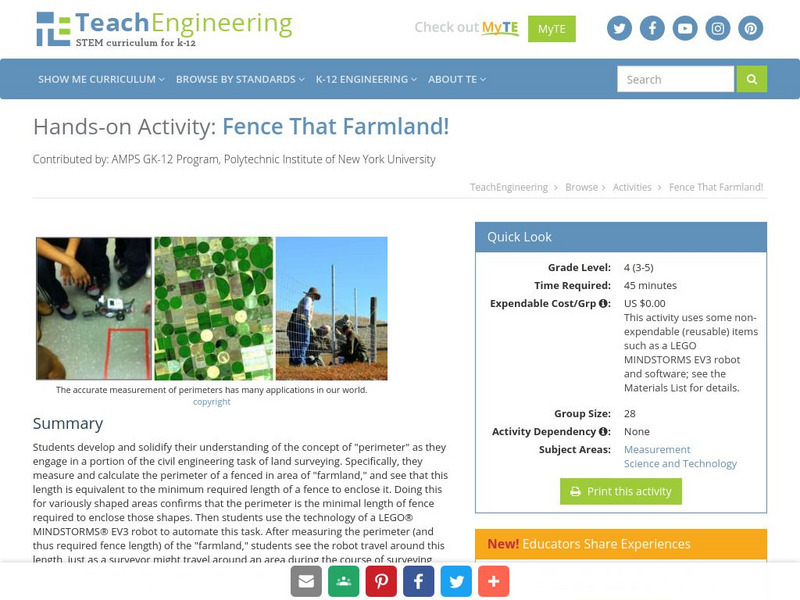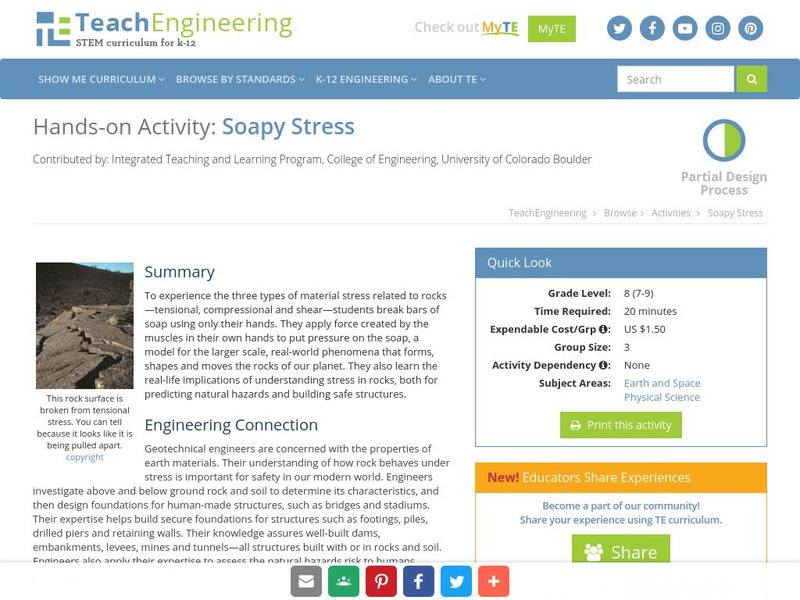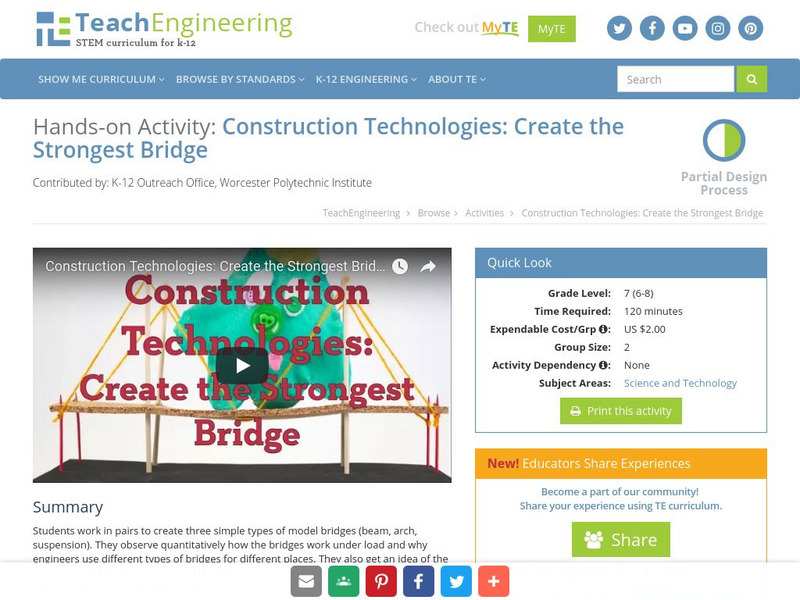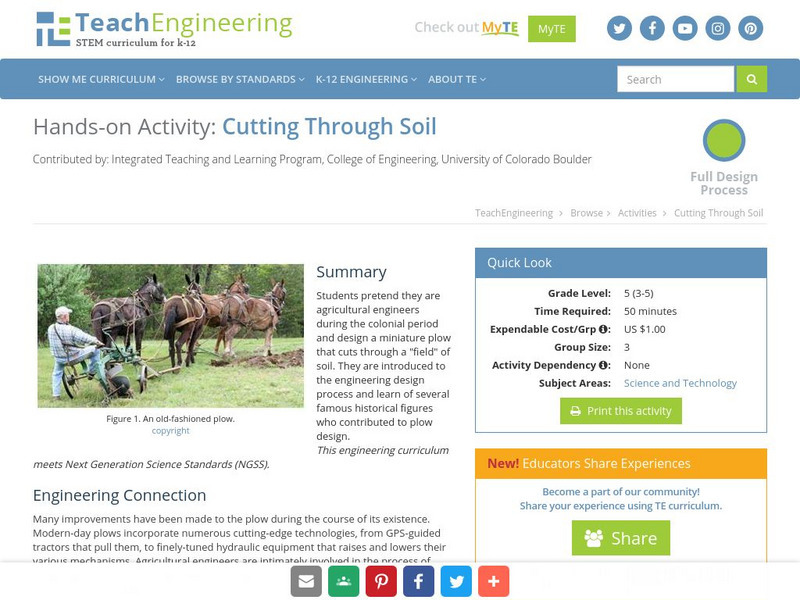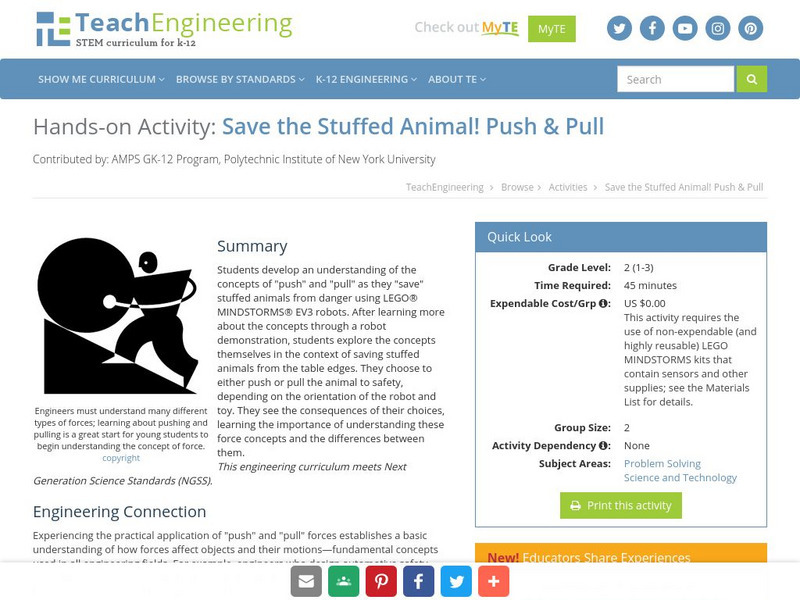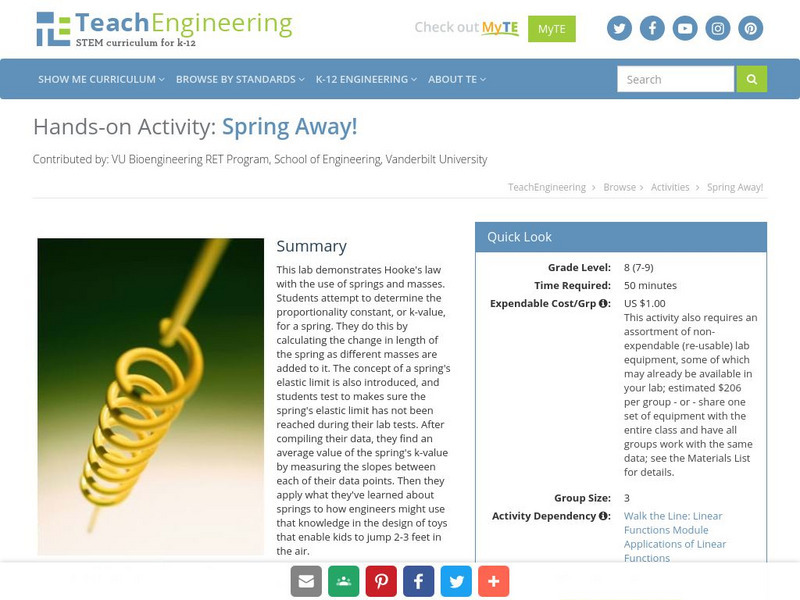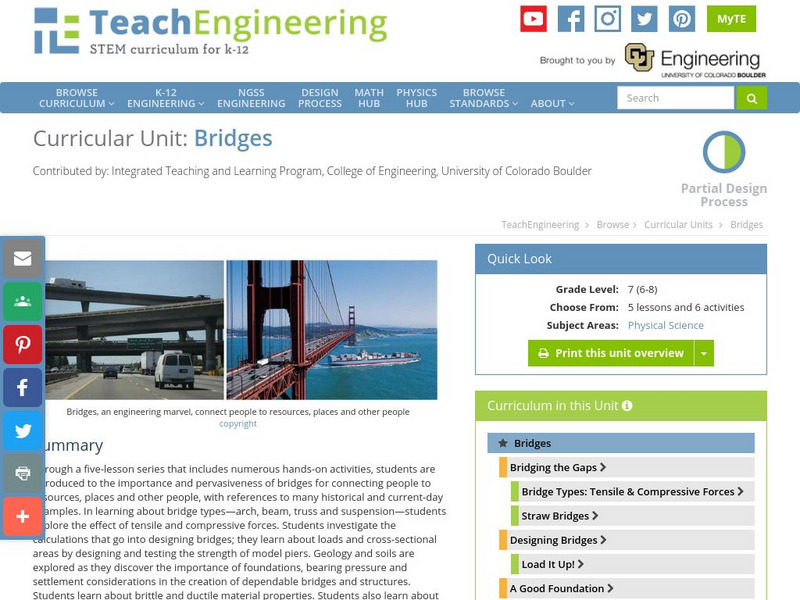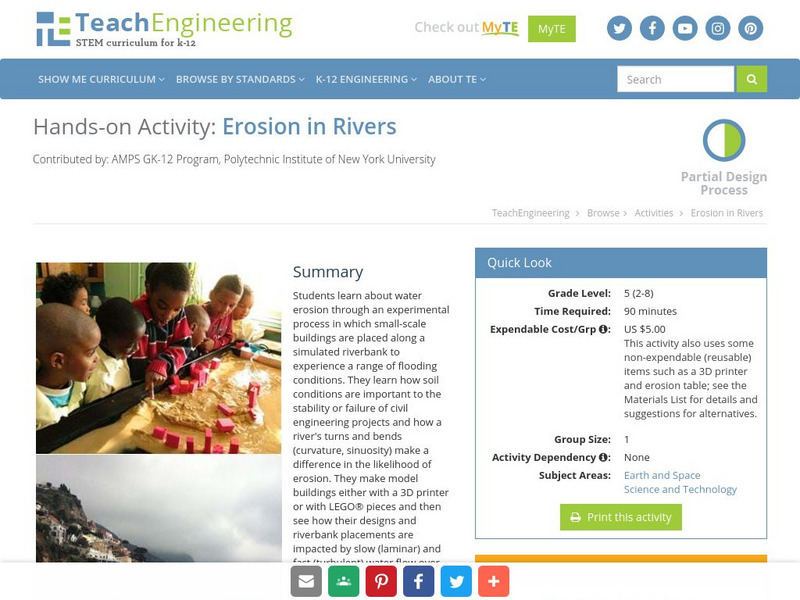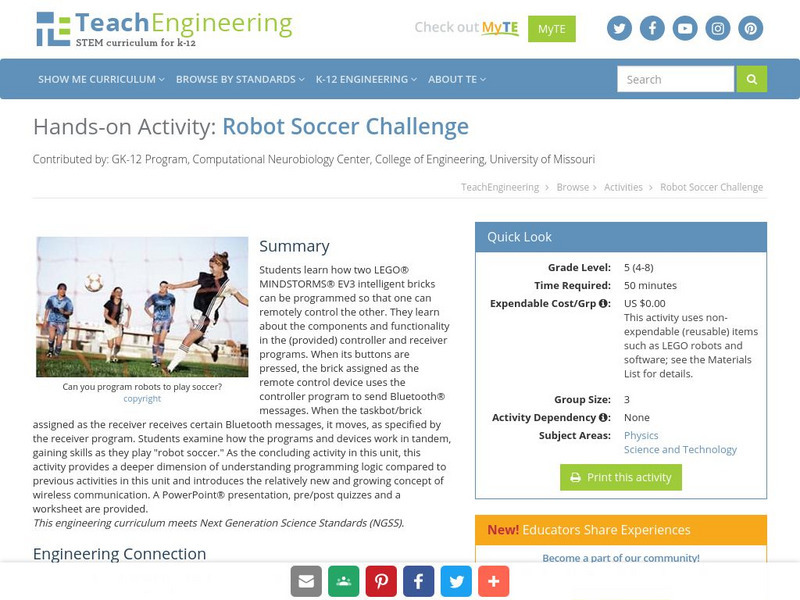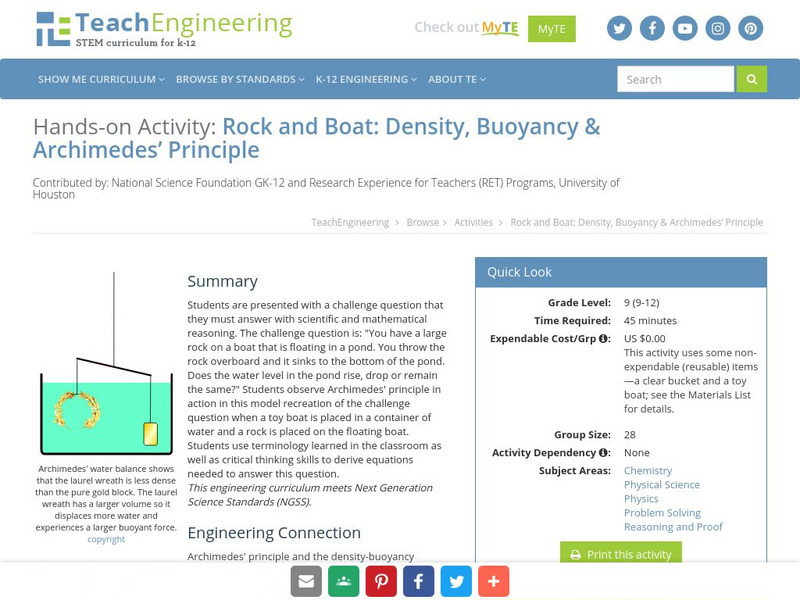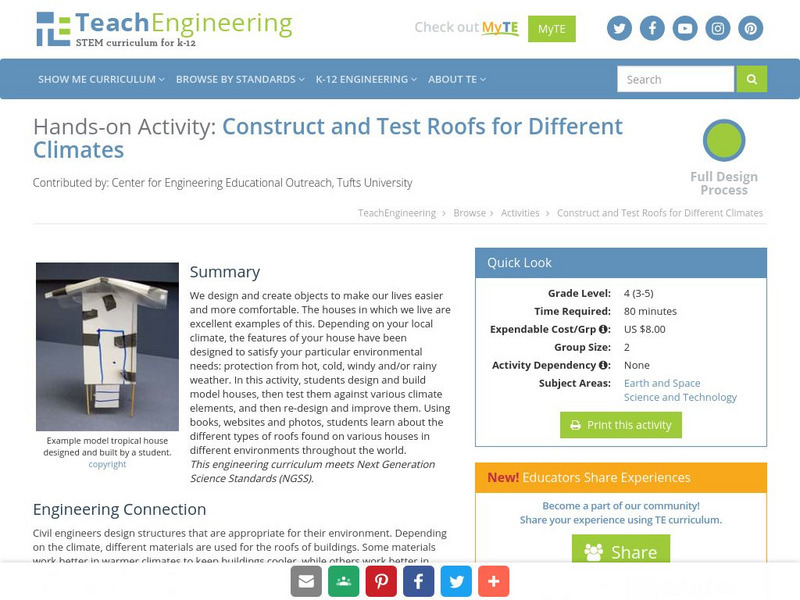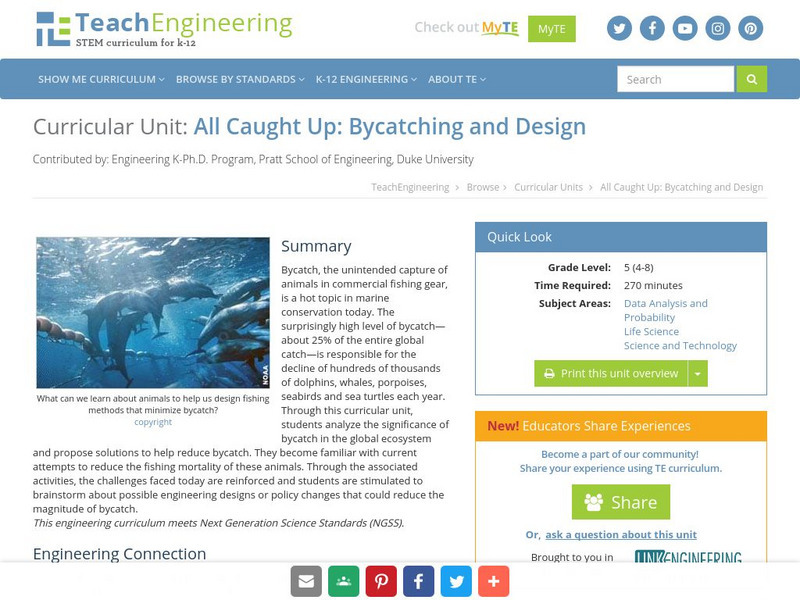TeachEngineering
Teach Engineering: Fence That Farmland!
Students develop and solidify their understanding of the concept of perimeter as they engage in a portion of the civil engineering task of land surveying, using the technology of a LEGO MINDSTORMS NXT robot to automate this task.
TeachEngineering
Teach Engineering: Soapy Stress
To experience the three types of material stress related to rocks - tensional, compressional and shear - students break bars of soap using only their hands. They apply force created by the muscles in their own hands to put pressure on...
TeachEngineering
Teach Engineering: Construction Technologies: Construct the Strongest Bridge
In this activity, students will work in pairs to create three simple types of bridges. They will observe quantitatively how the bridges work under load and why engineers use different types of bridges for different places. They also will...
TeachEngineering
Teach Engineering: Seismic Waves: How Earthquakes Move the Earth
Students learn about the types of seismic waves produced by earthquakes and how they move the Earth. The dangers of earthquakes are presented as well as the necessity for engineers to design structures for earthquake-prone areas that are...
TeachEngineering
Teach Engineering: Cutting Through Soil
Students pretend they are agricultural engineers during the colonial period and design a miniature plow that cuts through a "field" of soil. They are introduced to the engineering design process and learn of several famous historical...
TeachEngineering
Teach Engineering: Projectile Motion
Students are introduced to the concept of projectile motion, of which they are often familiar from life experiences,such as playing sports such as basketball or baseball, even though they may not understand the physics involved. Students...
TeachEngineering
Teach Engineering: Save the Stuffed Animal! Push & Pull
Students develop an understanding of the concepts of "push" and "pull" as they "save" stuffed animals from danger using LEGO MINDSTORMS NXT robots. After learning more about the concepts through a robot demonstration, students explore...
TeachEngineering
Teach Engineering: Spring Away!
This lab demonstrates Hooke's Law with the use of springs and masses. Students attempt to determine the proportionality constant, or k-value, for a spring. They do this by calculating the change in length of the spring as different...
TeachEngineering
Teach Engineering: Natural Frequency and Buildings
Students learn about frequency and period, particularly natural frequency using springs. They learn that the natural frequency of a system depends on two things: the stiffness and mass of the system. Students see how the natural...
TeachEngineering
Teach Engineering: Bridges
Through a five-lesson series that includes numerous hands-on activities, students are introduced to the importance and pervasiveness of bridges for connecting people to resources, places and other people, with references to many...
TeachEngineering
Teach Engineering: Let's Make Silly Putty
Students make two different formulations of imitation Silly Putty with varying degrees of cross-linking. They witness how changes in the degree of cross-linking influence the putty properties.
TeachEngineering
Teach Engineering: Light Plants and Dark Plants, Wet Plants and Dry Ones
Students plant sunflower seeds in plastic cups, and once germinated, these are exposed to different conditions of light levels and/or soil moisture contents. During exposure of the plants to these different conditions, students measure...
TeachEngineering
Teach Engineering: Erosion in Rivers
Students learn about water erosion through an experimental process in which small-scale buildings are placed along a simulated riverbank to experience a range of flooding conditions. They make model buildings either with a 3D printer or...
TeachEngineering
Teach Engineering: Robot Soccer Challenge
Students learn how two LEGO MINDSTORMS NXT intelligent bricks can be programmed so that one can remotely control the other. They learn about the components and functionality in the controller and receiver programs
TeachEngineering
Teach Engineering: Rock and Boat
Students observe Archimedes' principle in action in this challenge where a toy boat is placed in a container of water and a rock is placed on the floating boat. Students must explain why the water level rises/falls/stays the same based...
TeachEngineering
Teach Engineering: Construct and Test Roofs for Different Climates
We design and create objects to make our lives easier and more comfortable. The houses in which we live are an excellent example of this. Depending on your local climate, the features of your house will be different to satisfy your...
TeachEngineering
Teach Engineering: All Caught Up: Bycatching and Design
Bycatch, the unintended capture of animals in commercial fishing gear, is one of the hottest topics in marine conservation today. About 25% of the entire global catch is bycatch. This surprisingly high level of bycatch is responsible for...
TeachEngineering
Teach Engineering: Swim to and From the Sea!
Learners are introduced to the basic biology behind Pacific salmon migration and the many engineered Columbia River dam structures that aid in their passage through the river's hydroelectric dams. Students apply what they learn about the...
TeachEngineering
Teach Engineering: Be "Cool" With Popsicle Engineering
Beginning kindergarteners are introduced to science and engineering concepts through questions such as "What is a Scientist?" and "What is an Engineer?", and go on to compare and contrast the two. They are introduced to five steps of the...
TeachEngineering
Teach Engineering: Naturally Organized
Students work in teams to design a tabletop supply organizer inspired by the natural home of an insect species. Their prototype stores the group's classroom supplies (scissors, crayon boxes, pencils, and glue sticks). In addition to...
TeachEngineering
Teach Engineering: Solving Everyday Problems Using the Engineering Design Cycle
Students are introduced to two real-life problems that can be solved by using the engineering design process. For the first one, they watch a slide presentation that shows how students use the engineering design process to build an...
TeachEngineering
Teach Engineering: Trade Offs and Maximizing Efficiency in a Fast Food Restaurant
Students learn about how to improve efficiency by examining fast food restaurants. More specifically, they learn about the concepts of trade-offs, constraints, increasing efficiency and systems thinking. They consider how to improve the...
TeachEngineering
Teach Engineering: Gears: Lift It Up!
In this activity, students learn about the trade-off between speed and torque when designing gear ratios. The activity setup includes a LEGO pulley system with two independent gear sets and motors that spin two pulleys. Each pulley has...
TeachEngineering
Teach Engineering: What Color Is Your Air Today?
Students develop awareness and understanding of the daily air quality using the Air Quality Index (AQI) listed in the newspaper. They explore what engineers can do to help reduce poor air quality.


